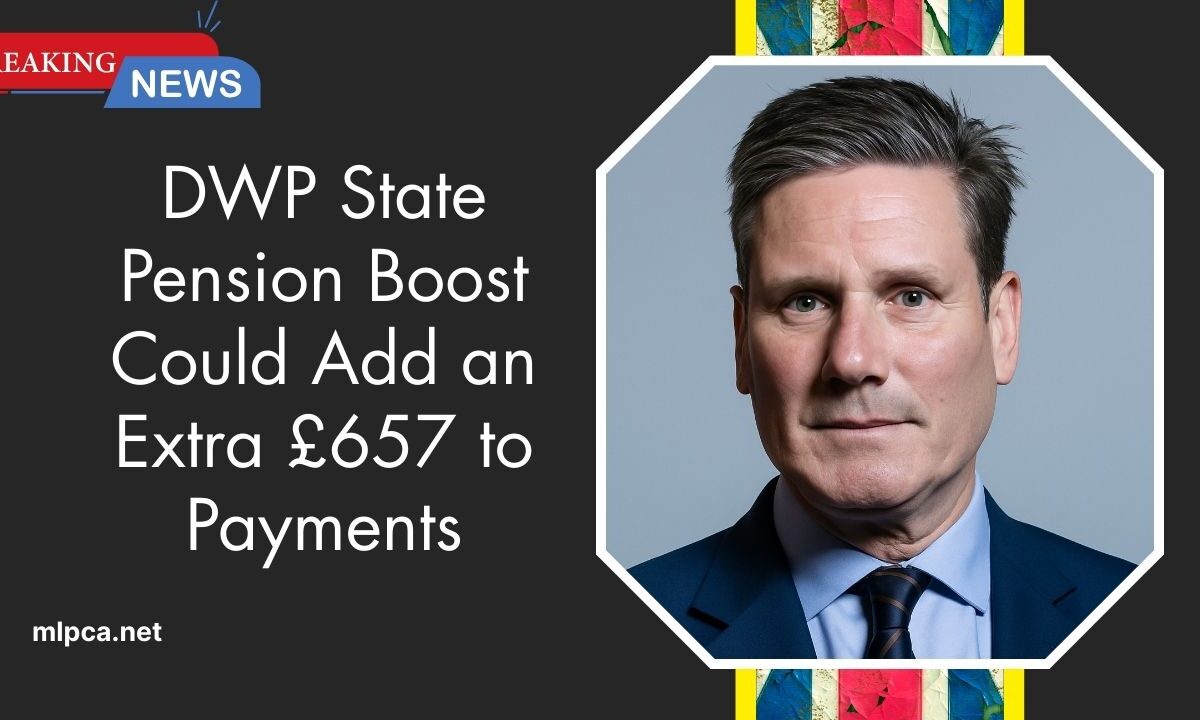State pensioners born after 1951 could see a significant financial uplift, with a possible £657 increase as part of the Triple Lock mechanism.
If the proposal for the 2025/26 tax year goes ahead, individuals eligible for the full new State Pension will be able to receive £11,973 annually, which works out to £230.25 each week.
Triple Lock and Earnings Growth
The Triple Lock, linked to a 5.5% earnings growth, may result in an increase in weekly state pension payments, bringing them to £242.90.
This would amount to nearly £972 over a four-week period, boosting the annual state pension to £12,630.80. This increase would provide a notable improvement in income for pensioners, following the rise in earnings growth.
What Is the Triple Lock?
The Triple Lock is the Department for Work and Pensions’ (DWP) promise to adjust pensions each year based on the highest of three criteria:
- The average annual pay increase from May to July
- The Consumer Price Index (CPI) measured in September
- A fixed rate of 2.5%.
These adjustments ensure that pensions keep pace with inflation, earnings growth, or a minimum increase, whichever is highest.
Economic Outlook and Challenges
While the UK economy faced a slight 0.1% dip in growth in May, positive economic indicators have also emerged. The Office for National Statistics (ONS) reported a 0.5% rise in GDP during the March to May 2025 period, surpassing the anticipated 0.4% growth.
Despite this, economic growth for the year is expected to be modest, and challenges remain, particularly due to high public borrowing and national debt levels.
Professor Joe Nellis on Economic Growth and Challenges
Professor Joe Nellis from MHA explained that the first quarter of the year saw strong growth, fueled by exports and a robust services sector, placing the UK among the top G7 performers. However, the economy’s performance in the second quarter fell short, and the outlook for the rest of the year is now more subdued.
Nellis pointed out the fiscal challenges faced by the Chancellor, emphasizing that there’s limited fiscal headroom due to high levels of debt. The Chancellor’s spending plans heavily depend on rejuvenating the economy. With the Autumn Budget approaching, there is growing anticipation about how the Chancellor will navigate these fiscal issues.
Government’s Fiscal Decisions and Potential Risks
Nellis highlighted that the Chancellor faces difficult choices. The government may need to either cut spending, increase borrowing, or raise taxes. The pressure to reduce public sector budgets could lead to a squeeze on unprotected areas.
However, political challenges could make significant spending cuts risky, as shown by recent Labour Party rebellion against the welfare reform bill.
Moreover, the Office for Budget Responsibility’s (OBR) July report indicated the intense burden the Triple Lock places on the UK’s economy. While demographic and economic shifts complicate the policy’s sustainability, any attempt to alter or remove the Triple Lock could result in political backlash and may prove difficult for the government to handle.
The UK government’s Triple Lock proposal offers a potential pension increase of £657 for state pensioners, improving the financial stability of many pensioners. Despite positive growth signs, challenges persist due to the economic outlook and public debt.
The government’s fiscal response, especially regarding the Triple Lock’s impact, will be crucial in shaping the future of pensions and public services.
FAQs
What is the Triple Lock mechanism?
The Triple Lock ensures that state pensions increase based on the highest of three measures: earnings growth, inflation (CPI), or a fixed 2.5% increase.
How much will the full state pension be in 2025/26?
Eligible individuals for the full new State Pension can expect £11,973 annually, which translates to £230.25 per week.
What challenges does the Triple Lock present to the UK economy?
The Triple Lock has placed a significant strain on the UK economy, particularly with demographic changes and rising national debt. It requires careful management to maintain its sustainability without causing political and economic instability.

